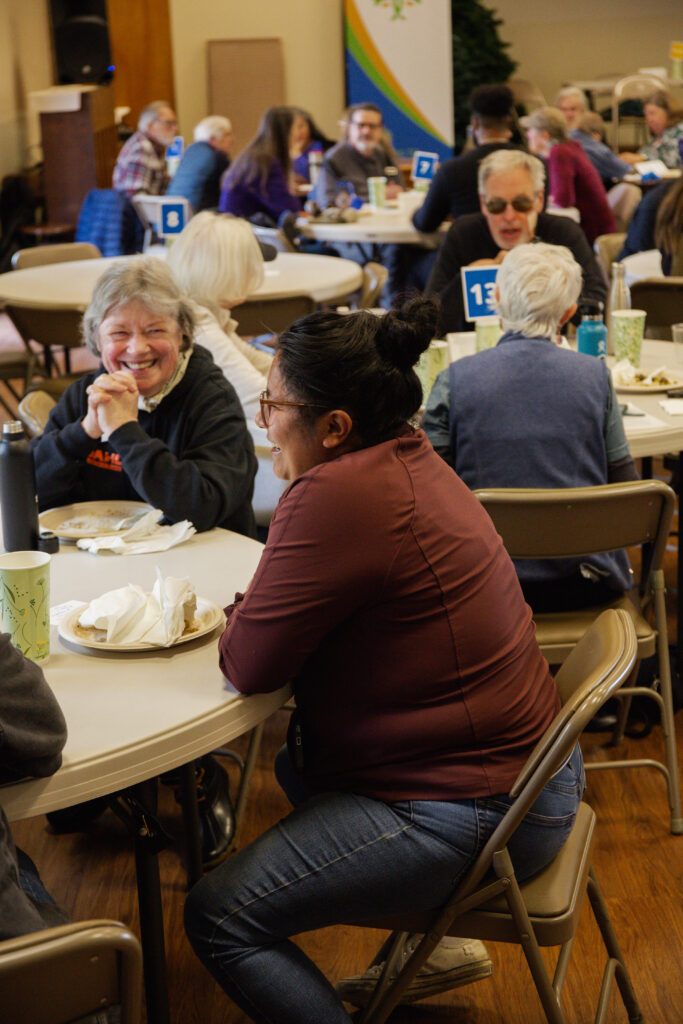
As we reflect on how our mission at Paths to Understanding needs to evolve to meet today’s context, I keep coming back to this: multi-faith organizations have a gift to offer the wider bridge-building movement.
A recent article by Allison Ralph put it plainly: advocacy and bridge-building strategies, on their own, are failing to create the kind of long-term change we need in a divided and anxious society. Here’s a link to her article.
She names something that many people in the bridge building space talk about:
- If you only do bridge building you don’t tackle the deep issues we face.
- If you do community organizing, policy work, or advocacy, groups begin to sort themselves into in-groups who mark their identity by political party or ideology.
The first avoids the issues. The second tends to contribute to the polarization of our time.
But multi-faith organizations like PTU? We live in the space between those strategies—and that’s exactly where new life can grow.
In the article, Ralph identifies six practices that multi-faith nonprofits embody:
- Dual-identity relationships – where people don’t have to water down who they are to belong.
- Tolerating disagreement – practicing the sacred skill of staying at the table when it’s hard.
- Shifting constellations – building flexible partnerships based on shared purpose.
- Shattering binaries – refusing the false choice between left and right, sacred and secular.
- Local relationship-building – recognizing that belonging starts in neighborhoods.
- Extensive reach – leveraging thousands of community spaces and congregations ready to act.
That’s not just a recipe for pluralism—it’s a blueprint for democracy.
A phrase I have been using lately: We can belong to the group AND choose to opt in or opt out of certain activities.
At PTU, we’ve been walking this path for decades. Our founders, Rabbi Levine and Father Treacy, knew that deep religious identity could be a bridge, not a wall. They built friendships across lines of faith, race, and tradition—without asking anyone to compromise who they were. And through that work, they built something sacred: trust.
Today, we carry that work forward—but we’re expanding the circle. Because the divides aren’t just theological anymore. They’re political. Cultural. Economic. Generational. And while fewer people identify with religious communities, many still gather for meaning, for service, for connection.
That’s why our work at PTU is shifting from multi-faith only to group-to-group more broadly—still rooted in our multi-faith experience, but reaching wider. Because the wisdom we’ve gained—about holding difference in tension, creating brave spaces, building human-to-human trust—is too important not to share.
We believe this: the habits of multi-faith peacemaking can help heal a fractured world.
So as we continue reflecting on our mission statement, we’re asking: how do we honor our multi-faith roots and embrace our evolving purpose? How do we clearly say, “Yes, you belong in this work,” whether you come from a mosque, a union hall, veteran’s organization, a cultural center, quilting group, or no organized group at all?
The good news is we don’t have to choose between advocacy and connection, justice and community, conviction and curiosity. As Ralph points out, we just need to learn how to hold them together.
We believe the multi-faith movement offers gifts for this moment. And that’s a gift PTU is ready to offer—freely, with curiosity, compassion, and courage.
